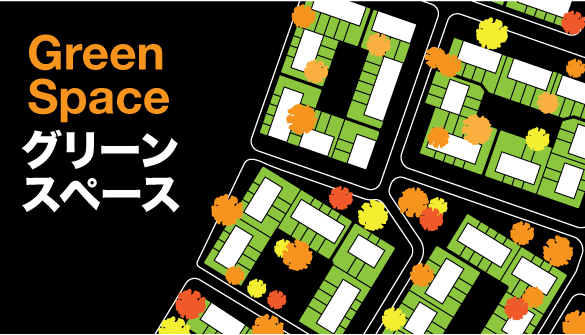
Japan is a notoriously cramped nation. The commercial pressures to utilize land efficiently entail that little is set aside for the gardens, parks, or open spaces. Well, perhaps this post should be re-titled: “Something that Japan IS Learning from the West” because the Japanese retailer Muji is attempting to put Western town planning practices to use in building a greener suburban community East of Tokyo. The project makes an interesting case study.
The famous no-brand brand is collaborating with developer Orix in building a new community of 177 houses in the town of Shiroi, east of Tokyo. Muji decided to sell homes some time ago (after all, why stop at selling household goods when you can sell the house to go with them?). Their houses stay true to the brand’s muted palette and no-nonsense design ethos. While initial models were spatially innovative, subsequent versions have grown more conventional, presumably in order to meet the demands and constraints of the mainstream Japanese housing market.
Muji’s mission to improve domesticity is expanding beyond the home; they are conceiving entire communities. Recently, Muji developed several apartment blocks in Tsudanuma, Chiba Prefecture with the developer Mitsubishi. Now, in the nearby town of Shiroi (the town’s name fittingly means “white”) the company is planning to build a new subdivision. The first 22 units will be Window Houses, which were designed in collaboration with architect Kengo Kuma.
Surveying
Muji conducted a survey to gauge prospective homebuyers’ vision of their ideal community. The results on Muji’s website reveal customers’ desires to live in a greener neighborhood. Parks, vegetable allotments and shared gardens proved popular. Muji’s design response is to orient the houses to “share” rear gardens and to eliminate (or at least lower) the fences between properties. This sounds good, but the plans on their website show that the back gardens do not seem very generous and the privacy and overlooking issues are problematic. In short, it seems that they will fall short of meeting their customers’ desires usable public space.
Looking to the West
Images on Muji’s website show that the company is looking to established American and British suburbs (like the Garden City of Letchworth) as models. These places might be leafy, but are they appropriate models for Japanese developments? The problems of American suburbs are well documented. Detached houses are dispersed in communities built for cars (not pedestrians). Plans for Shiroi indicate a similar approach, but at higher density and on smaller lots. Density is by no means disadvantageous.
Density and Consolidation
Further consolidating of the houses, would maximize what little space is available for public and private recreation. It would be better to build terraced housing (currently a model not in Muji’s catalogue). This would create more intimate streets and help foster a sense of community. Rather than the back-to-back arrangement of houses, clustering the dwellings around community courtyards (as schematically illustrated) would create and protect shared gardens and play areas whilst preserving privacy. These shared green spaces should promote biodiversity and be linked by a network of footpaths.
As Japan’s ageing population declines, more space will become available. However, simply expanding current development models is not the best way forward. Young Japanese families are showing an increasing interest for gardening and farming as well as a desire for community and shared facilities. The best way to foster sustainable communities would be for developers, town planners (and certain retailers) to look to recent developments in Holland, Scandanavia, and the UK for examples of how to build better communities. As more land becomes available, it should not be inefficiently squandered. Density is a sustainable asset.
2 responses to “Green Spaces in Japanese Cities”
[…] Muji’s view, the key innovation of the project is the shared gardens between properties, separated by a low railing and vegetation. These spaces are quite compact, […]
Without a doubt, Terraced housing is a way better option than the current method being employed by Japanese developers/Architects. Also, the planning just seems so out of touch! And where did they get there idea for the childrens playground? Chernobyl by any chance? Seriously, I can design a better community than these guys!